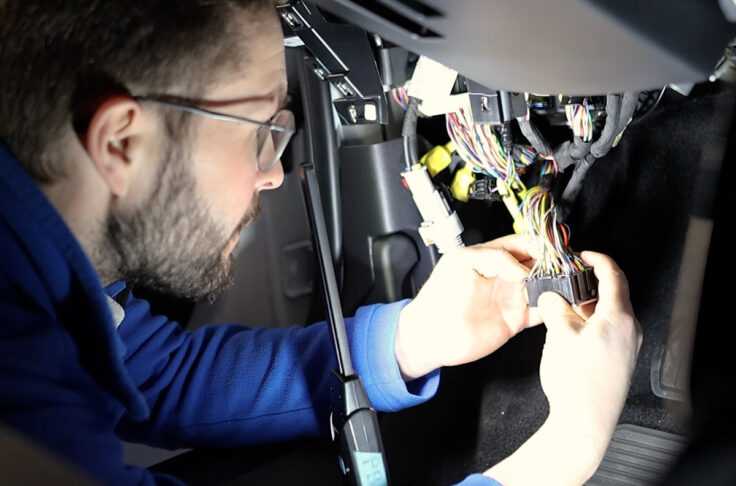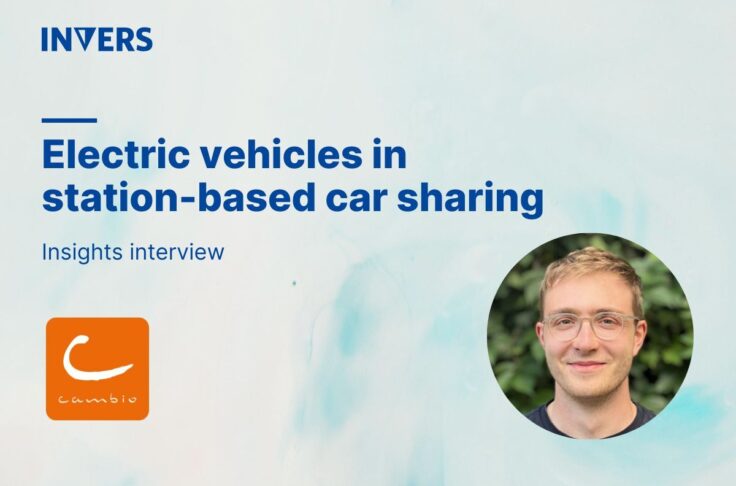Free-Floating Carsharing in Italy: An Insights Interview
Summary
The free-floating carsharing market in Italy is one of the Top 3 European markets. Italian customers can use carsharing in many Italian cities like Milan or Rome. We asked Luca Refrigeri, Data Analyst at Osservatorio Nazionale Sharing Mobility, about the history, main KPIs, usage characteristics, profitability, and trends of free-floating carsharing in Italy.

Carsharing is booming. Many operators are reporting expanding fleet sizes and new record-high customer registrations. At the same time, the business models of operators are evolving and seeing new innovations. That is why INVERS will launch the Mobility Barometer on European Free-Floating Carsharing on 04.05.23; a free-of-charge, 55-page report that helps carsharing operators quickly understand key market dynamics, insights, and trends.
Our Barometer highlights recent findings from the Italian shared mobility research organization Osservatorio Nazionale Sharing Mobility. Their experts gather, analyze and understand the key developments of the market. Their annual report “Rapporto Nazionale Sulla Sharing Mobility” was published for the 6th time in 2022. We believe, it is one of the key resources for understanding the European free-floating carsharing markets. Therefore, we are happy to sat down with one of most knowledgeable Italian shared mobility expert, Luca Refrigeri, for this interview.
- Who is Osservatorio Nazionale Sharing Mobility
- Development of free-floating carsharing in Italy
- Main players of the Italian free-floating carsharing market
- Observations and trends in Italian carsharing
- Typical usage characteristics
- Interconnection of free-floating and station-based carsharing
- Options to increase profitability
Who is the Osservatorio Nazionale Sharing Mobility and what is your aim?
The Italian National Shared Mobility Platform, launched in September 2015, is promoted by the Ministry of the Environment and the Energy Security, the Ministry of Infrastructure and Transport, and the Sustainable Development Foundation. The Platform consists of more than 130 members, including shared mobility providers, academia and research institutes, municipalities and local authorities. The main purpose of the initiative is to create a collaborative platform between public and private sector, in order to analyze, encourage and promote the phenomenon of shared mobility in Italy. Each year the Shared Mobility Platform collects data and publishes the National Report on Shared Mobility, disseminating information and best practices. Each year the Platform organizes the National Conference on Shared Mobility, which provides an opportunity to take stock of trends in shared mobility in Italy and to initiate a public discussion on the prospects and opportunities for the sector.
You run an annual report on the state of shared mobility in Italy. How was the development of Italian free-floating carsharing in the past years?
The first free-floating carsharing service was born in Milan in 2013 representing a turning point for the shared mobility sector in Italy. From there until the Covid-19 crisis, growth in demand has been steady, reaching 12 million rentals by the end of 2019. The latest data from the National Observatory refer to 2021, a year of general recovery for the shared mobility sector but still affected by national pandemic measures. In this context, free-floating carsharing seemed to be the only sector still struggling and far from the performance of previous years. In 2021, in fact, the number of trips realized by free-floating services drops by 8 percent, accompanied by a 10 percent decrease in the number of cars compared to 2020.
Who are the main players of the free-floating carsharing market in Italy?
In 2021, the biggest players in terms of vehicles and number of citizens with access to the service were Enjoy, Share Now and LeasysGo (editor’s note: now eGO! DRIVALIA), present in major Italian cities including Rome, Milan and Turin. These three operators together account for 85 percent of the free-floating fleet and 77 percent of the entire Italian carsharing fleet. In the same year, it is also important to report the growth of services operating in medium-sized cities such as Corrente in Bologna and Timove in Florence, and of regionally active carsharing operators such as Evai in Lombardia.
Can you share some outstanding observations and trends that you’ve seen in Italian carsharing? What is innovative and unique?
Talking about sustainability in the Italian carsharing we can certainly point out the growth in the share of electric vehicles, which by 2021 was back above 25 percent, as well as the increase in the number of electric microcars in fleets. The so-called “hybridization” between free-floating and station-based is increasingly common, such as the tendency of services to extend their operations to nearby cities, creating a “network” effect capable of intercepting inter-city mobility flows. We are also monitoring with great interest the experimentation of new micro-carsharing and neighbourhood carsharing services in different cities.
What are typical usage characteristics in the Italian free-floating carsharing market?
Considering trips and km driven, the demand for carsharing has not yet recovered to the pre-pandemic level. On the other hand, however, the average duration and length of individual rentals are growing, from 8.3 km/trip to 9.9 km/trip and from 40.2 min/trip to 43.7 min/trip, respectively. It seems to us that this is a sign that the business model of this service is transforming to target broader and more diverse customer segments than in the past. It is no coincidence that the type of vehicles is also leaning toward cars with five doors and the ability to perform multiple functions. The average lengthening of rentals is a sign that cars are also being rented for longer periods such as the day and weekends.
How interconnected have free-floating and station-based carsharing become in recent years?
In the case of free-floating there is the possibility of booking the car in advance and using it even for medium and long rentals with dedicated fees, while in the case of station-based there is the possibility of ending the trip outside the parking spot. These two extensions expand the possibilities of use for both services and optimize the use of cars by increasing their utilization rate. This is why we are seeing an increasing diffusion of so-called hybrid solutions, which are very versatile, especially suited to the contexts of small to medium-sized Italian cities and increase the potential customer base.
How can carsharing operators continue to increase profitability?
We think that a competitive advantage should be given to carsharing by discouraging the use of personal cars, first through restricting access to certain areas of the city (limited traffic zone; congestion charge) and charging for roadside parking. The introduction of these restrictive measures against personal vehicles, excluding shared vehicles, results in support for their use. Moreover, advantageous economic conditions could be given to shared mobility services. Measures in this regard can be purely regulatory such as, for example, granting an exclusive right or limiting the number of operators, or economic through the provision of an operating and/or investment subsidy, or both. Finally, as demand-support tools, public support is directed toward users, including potential users, with the aim of strengthening demand and consequently supporting the supply of shared mobility services. Instruments used for these purposes are, for example, mobility vouchers, economic incentives with a spending constraint in shared mobility services, etc.
Further insights into free-floating carsharing
Thank you, Luca, for the great chat, showing us your data clinic and this insightful interview.
For more information and interesting findings about free-floating carsharing, we encourage readers to check out our INVERS Mobility Barometer on European Free-Floating Carsharing launching on 4.5.23 or the above mentioned study “Rapporto Nazionale Sulla Sharing Mobility”.


